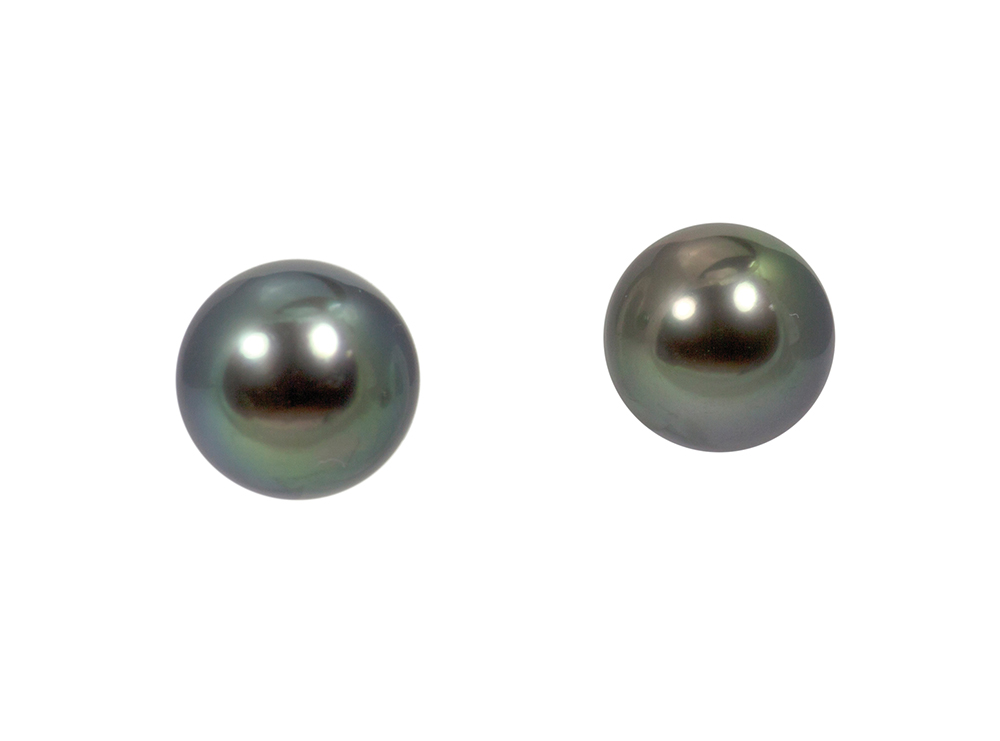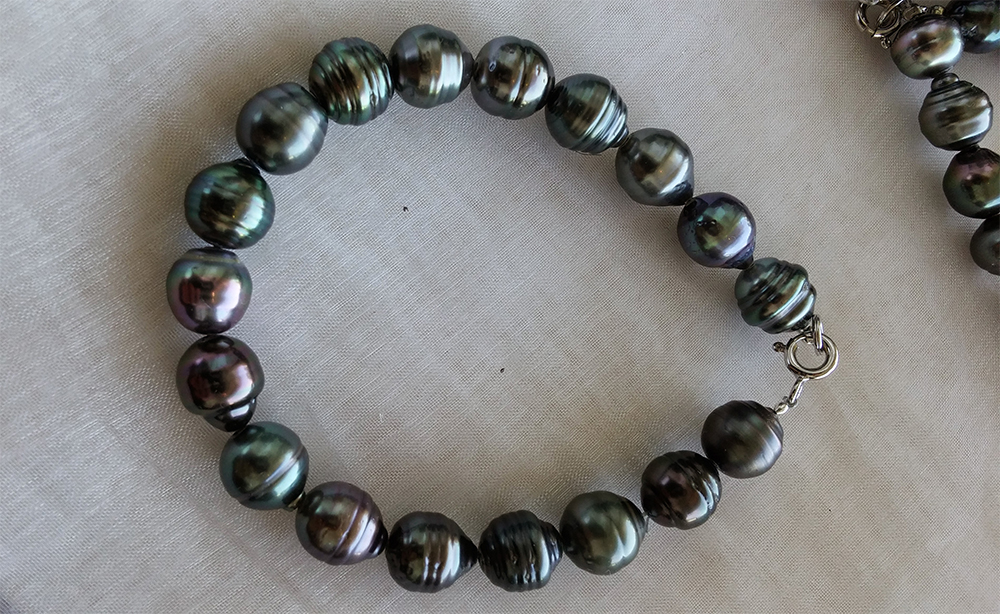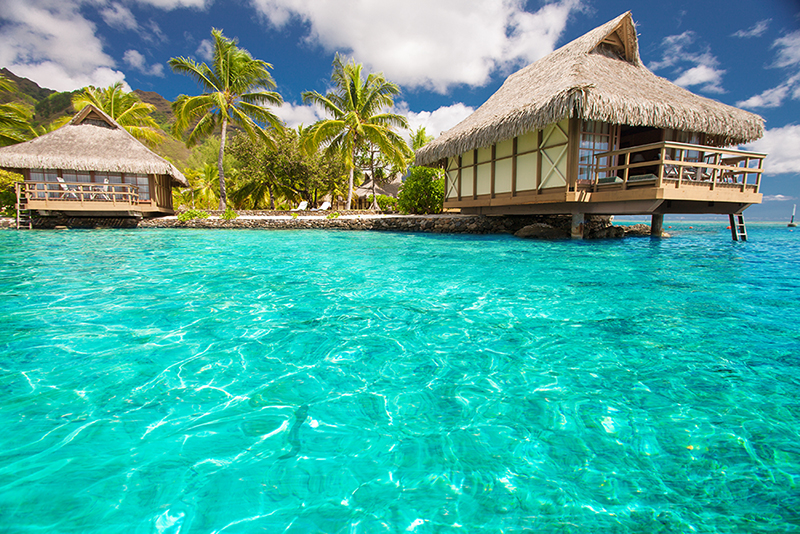Famous all over the world for their uniqueness and beauty : Tahiti pearls are better known as Tahiti black pearls. The word is poerava in Tahitian, for “poe” the pearl and “rava” black.

No, but almost: they can be extremely dark but they are very rare: they are for the most part of an anthracite gray color, dark silver, with many shades of green.
Do Tahitian pearls come from the island of Tahiti?
No, pearls come from pearl farms located in the islands and atolls of French Polynesia. It is therefore common to say Tahiti to name the country French Polynesia. Tahiti being the main island with the capital Papeete: the jewelers are offering there the best quality on the world for Tahiti pearls, which are coming directly from other islands, including pearl farms of Tuamotu.
Did you know that in all the world : only Tahitian pearls can be naturally almost back pearls !
This gem of the Pacific Ocean is produced by an oyster with black lips: the Pinctada Margaritifera, which is living in the lagoons of French Polynesia. It is their rareness that gives them so much value.
Black pearls are widely used in high jewelry for the creation of unique and prestigious jewelry items : pendants, black pearl necklaces, rings and other original creations for women, men and children.
The cultivation process takes a long time. It lasts several years. It’s quite complex : collectors in the lagoon, grafting and nucleus. After the various interventions, it takes a period of immersion and maintenance of a minimum of 18 months for the nacre (mother-of-pearl) can secrete a pearl layer, and a possibility to harvest.
The size of Tahiti black pearls is not the only quality factor , but larger pearls are priced higher because they are very difficult to grow.
The size of the black pearls Tahiti is expressed in millimeters and it generally varies in 8 and 14mm. There are some exceptional cases where pearls can measure 16mm or even 18mm. The extraordinary size is 21mm, and pearls of this size are seen as exceptional and very rare jewels.
The thickness of the mother of pearl is an important factor for their quality, but also for the beauty of the pearl. Tahitian pearls are known for the sheer thickness of mother-of-pearl and this is due to the long duration they have spent in the oyster. Tahitian black pearl has a minimum mother-of-pearl thickness of 80%.
In general, pearls whose thickness of the mother of pearl is small or fine are not accepted for sale: many controls and requirements are preserving the highest quality levels of Tahitian pearls.
Tahiti black pearls can have different shapes, there are 5 main ones:
- the round shape,
- the semi-round shape,
- the circle shape,
- the baroque shape,
- and the semi-baroque shape.

Experts recognize the round pearl in its way of rolling: it must be straight. Semi-round pearls are almost round pearls with imperfect sphere shape. Their diameter varies between 2% and 5%. The baroque shape refers to irregular pearls with different axes of rotation.
Semi-baroque black pearls have generally 4 different shapes :
- Oval shape,
- Button shape,
- Pear,
- and drop.

How a pearl is reflecting light and how it shines is a decisive factor in the quality of the pearl and concerns the surface of the pearl.
The black pearl Tahiti is famous for the high level and brilliance of its luster. There are 4 grades of luster : Excellent, Good (which means bright or very bright), fair and poor.
To determine the grade of pearl luster, we project a reflection of light on the pearl. If the reflection is intense or bright then the pearl has an excellent or good luster. On the other hand, when the reflection is fuzzy without any intensity, we can conclude that the luster of the pearl is soft or poor.
Professionals use a number of criteria to define the quality of pearls in relation to their surface. All the surface is being analysed : the peculiar character, the slight imperfections, the moderate imperfections and the heavy imperfections.
- The pearls whose surface is perfect are Gemme grade,
- Those with very slight imperfections that are smooth with tiny defects affecting less than 10% of their surface are classified in grade A.
- Grade B are pearls with slight imperfections occupying less than 33% of their surface.
- In grade C, we find pearls with moderate imperfections occupying less than 66% of the total surface area.
- Pearls with large or heavy imperfections, which means slight imperfections affecting more than 66% of the surface or deep defects concentrated on nearly 50% of the surface are classified in grade D.
Pearls are joyful and very vulnerable to certain conditions such as humidity or acidity.
To maintain their beauty and brilliance, it will be necessary to avoid that they come into contact with cosmetic products. They should be cleaned carefully with a soft cloth.
The pearls can deteriorate in contact with other jewelry, so it is advisable to store them in boxes with compartments.
Also know that keeping black pearls in a box for a very long time can cause dehydration. Tahitian pearls should avoid getting wet and exposed to high temperatures.
If it seems that their luster is weakening, the intervention of a specialist may be necessary.
Enjoy your unforgettable trip to Tahiti and the islands to visit jewelry stores like Tahiti Pearl Market : the best place in the world to buy jewelry with Tahitian pearls. You will be able to obtain a certificate of authenticity which will specify from which island or atoll come the pearls.


